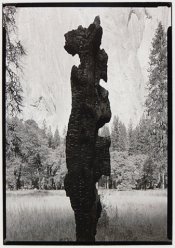warden
Member
Thanks for sharing! This is much deeper than I ever go into the technical side but it’s fun to read about it.So basically a virtually meaningless statement. Sure maybe you were generalizing or using imprecise language. I have no problem with that, but then there shouldn't be claims about precision and disparaging others for their lack of it.
Let me be more precise on flare. Veiling flare is an overall non-imaging forming exposure that compresses the shadows and comes primarily from the luminance of the scene interacting with the optical system of the camera. The average flare for a statistically average scene is around one stop. It can be higher or lower. A stop flare adds a stop exposure to the shadows, changing the placement of the shadow exposure and disproportionately compressing the shadow values. It effectively takes a 7 stop scene and reduces it to a 6 stop illuminance range at the film plane. This is a part of defining "Normal" development.
View attachment 274086
I did a flare test where a "black box" target was created. A hole was cut into a black velvet lined box. A hood surrounded the opening to reduce extraneous light from entering. Cards of single tones and mixed tones were used to surround the opening and introduce flare. It was shot on 35mm film. An exposure was determined. After the test a sensitometric exposure was place at the end of the roll. The resulting values from the test are placed onto the film curve.
Now, this just shows the change in shadow placement caused by flare and not the compression.
View attachment 274082






 I use to 'cut my ASA in half' in the late 70s, but that was from judging the results (I'd take one 4x5 at the meter reading, and one at one more stop of light). Eventually I learned about something called reciprocity failure which was really the reason I was 'halving the ASA' (but I always set the meter at box speed, I just gave the film another stop). Early 80s I had enough money to buy a copy of The Negative and went over it and tried several things, checking out the possibilities, such as two-bath development and such.
I use to 'cut my ASA in half' in the late 70s, but that was from judging the results (I'd take one 4x5 at the meter reading, and one at one more stop of light). Eventually I learned about something called reciprocity failure which was really the reason I was 'halving the ASA' (but I always set the meter at box speed, I just gave the film another stop). Early 80s I had enough money to buy a copy of The Negative and went over it and tried several things, checking out the possibilities, such as two-bath development and such.
